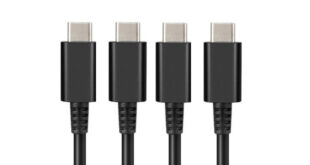What is the secret to life the universe, and everything? Marketing.
Okay, it’s controversial, but hear me out: we’ve all seen mediocre products that do fabulously well because they’ve got great marketing behind them.
We’ve also seen great products flop for no discernable reason, although when you dig a bit deeper it’s usually because nobody heard about them. Marketing is the key to success in life.
I’d never recommend you create a weak product and invest all your energy into your marketing instead. But if you’ve got a great product, it’ll need great marketing behind it to achieve the success it deserves.
When you’re marketing apps, there are several techniques you can use to help your app sell. Here are some of the top things to look out for:
1)
App name: If you have a utility app, pick a clear name that describes what the app does. If you have a game, give your app a name that will appeal to your audience. I doubt there’s much demand for ‘Noughts & Crosses EXTREME!’ (trying too hard) or for ‘space game’ (which really sounds like you haven’t put the effort in).
Remember, you can include words like ‘free’ or ‘lite’ in your app name to encourage people to download your trial version.
2)
Icon: Make sure the icon you use in the store is professionally designed and looks great in isolation. You often see people put ‘FREE’ or ‘50% off’ flashes on icons and with good reason: often the icon will be seen without a description in the store and it needs to provide as much information as possible. Make sure it conveys your app’s core themes. Abstract icons might look great, but they don’t help you to tell your story and draw in shoppers.
3)
Description: Try to address your customer directly in your description in the app store. They’re not interested in who you are or how you made the app. Just cut to the chase and tell them about the adventures they can take part in, or the benefits they’ll receive by using your app. It’s hard to write a clear description, but it makes a huge difference. Even when apps are free, people defend their time and won’t download something unless you can convince them it’s worth their while.
4)
Screenshots: The screenshots in the store give an idea of what the app involves, and also give you a chance to show that you’ve put the legwork in to create decent graphics and you’re not wasting anyone’s time.
Try to use a variety of images that show different aspects of your game. Don’t forget you can annotate the screenshots to call out key features.
5)
Reviews and ratings: People don’t like to be the first to try something, so give some social proof that your app is worth time and/or money by encouraging your app’s users to rate the app in the store and write a short review. It doesn’t have to be War and Peace: a few words about why they enjoyed the app is all it takes to reassure other app users.
6)
Market outside the store: Don’t think your marketing all takes place in the store. Create a video to show your app in action and put it on Youtube. Build a website to promote your app, and maybe even blog about its development. Court external reviews and advertise. Carry business cards wherever you go. Send a press release to the local paper. Getting an app into the store is distribution, and a lot of app discovery does take place in the store. But your most powerful marketing will take people from outside the store and drive them to it to buy.
What else have you found effective in marketing your app? Feel free to leave a comment below…
—
This blog post is written by Softtalkmobile, and is sponsored by the Intel AppUp developer program, a single channel for distributing apps to multiple devices, multiple operating systems, and multiple app stores.

 MCV/DEVELOP News, events, research and jobs from the games industry
MCV/DEVELOP News, events, research and jobs from the games industry



